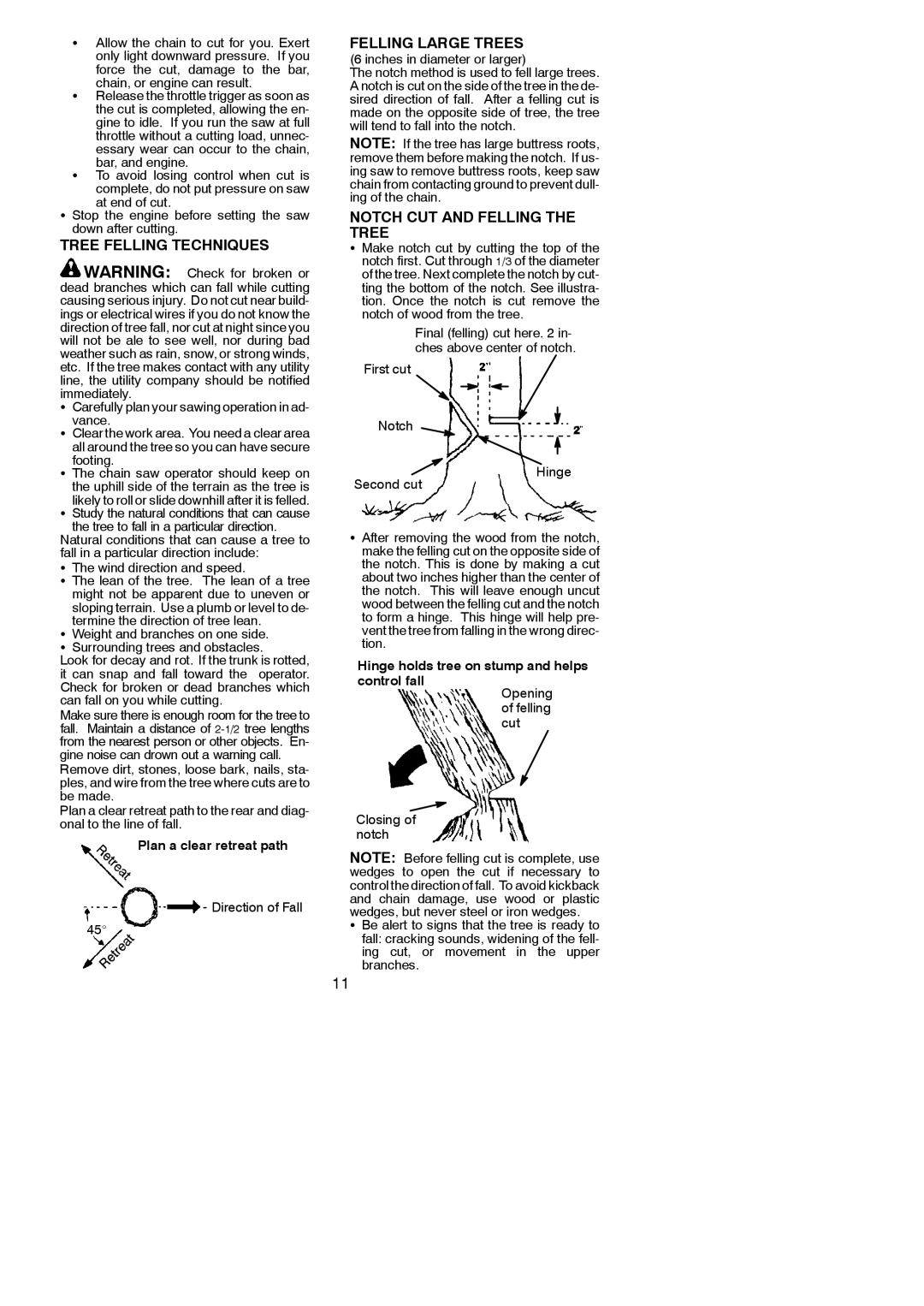545001484 specifications
The Poulan 545001484 is a powerful and efficient chainsaw designed for both professional and home use. Renowned for its robust performance, this model is ideal for pruning, cutting firewood, and tackling various outdoor projects. The chainsaw boasts a lightweight construction, enabling users to operate it for extended periods without experiencing excessive fatigue.One of the standout features of the Poulan 545001484 is its reliable 50cc two-cycle engine. This high-performance engine provides ample power to cut through thick branches and logs, ensuring efficiency in various cutting tasks. The chainsaw's air injection system is another noteworthy technology that enhances its performance by keeping the air filter cleaner for longer, reducing downtime for maintenance. This means users can focus on their work, knowing they won’t have to clean or replace the filter frequently.
The design of the Poulan 545001484 incorporates a 18-inch bar and chain, striking a balance between agility and the ability to tackle larger cuts. This length allows for smooth cutting while still being manageable for users of various skill levels. Additionally, the chainsaw features an automatic oiler, ensuring that the bar and chain are properly lubricated during operation, which extends the life of both components and promotes cutting efficiency.
Safety is paramount in chainsaw design, and the Poulan 545001484 does not compromise in this area. It comes equipped with features such as a chain brake, which stops the chain immediately in case of kickback, enhancing user protection. The cushioned, ergonomic handle aids in reducing vibrations during use, further increasing comfort and control for the operator.
Easy maintenance is another appealing aspect of the Poulan 545001484. The tool-less chain tensioning system allows users to adjust the chain quickly and easily without needing additional tools, which is particularly beneficial during long cutting sessions. Overall, the Poulan 545001484 combines power, efficiency, and user-friendly design, making it a preferred option for anyone in need of a reliable and versatile chainsaw for various outdoor tasks. Its innovative features cater to experienced users while remaining accessible for novices, ensuring it stands out in a competitive market.

